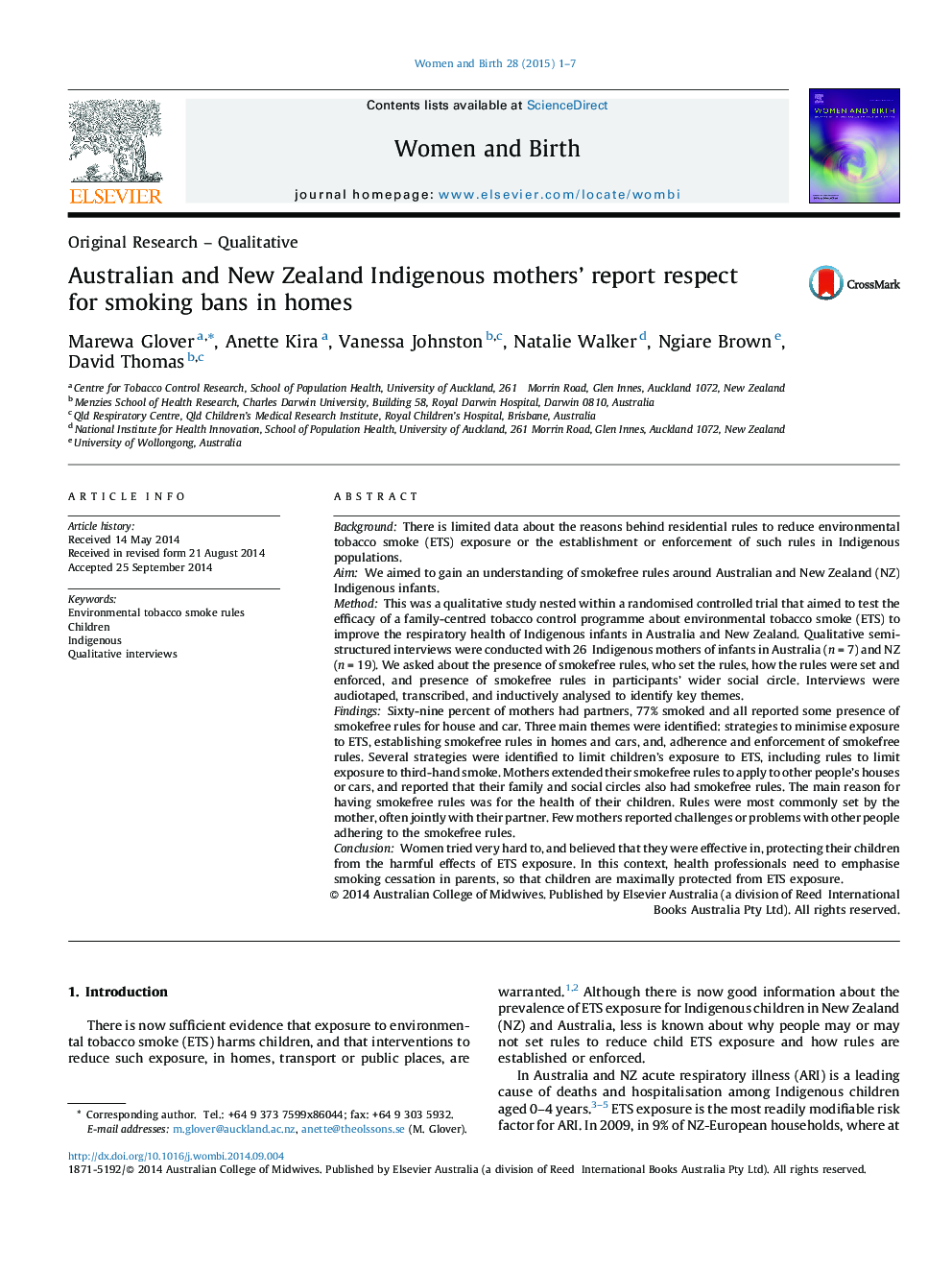| کد مقاله | کد نشریه | سال انتشار | مقاله انگلیسی | نسخه تمام متن |
|---|---|---|---|---|
| 2635904 | 1137367 | 2015 | 7 صفحه PDF | دانلود رایگان |
BackgroundThere is limited data about the reasons behind residential rules to reduce environmental tobacco smoke (ETS) exposure or the establishment or enforcement of such rules in Indigenous populations.AimWe aimed to gain an understanding of smokefree rules around Australian and New Zealand (NZ) Indigenous infants.MethodThis was a qualitative study nested within a randomised controlled trial that aimed to test the efficacy of a family-centred tobacco control programme about environmental tobacco smoke (ETS) to improve the respiratory health of Indigenous infants in Australia and New Zealand. Qualitative semi-structured interviews were conducted with 26 Indigenous mothers of infants in Australia (n = 7) and NZ (n = 19). We asked about the presence of smokefree rules, who set the rules, how the rules were set and enforced, and presence of smokefree rules in participants’ wider social circle. Interviews were audiotaped, transcribed, and inductively analysed to identify key themes.FindingsSixty-nine percent of mothers had partners, 77% smoked and all reported some presence of smokefree rules for house and car. Three main themes were identified: strategies to minimise exposure to ETS, establishing smokefree rules in homes and cars, and, adherence and enforcement of smokefree rules. Several strategies were identified to limit children's exposure to ETS, including rules to limit exposure to third-hand smoke. Mothers extended their smokefree rules to apply to other people's houses or cars, and reported that their family and social circles also had smokefree rules. The main reason for having smokefree rules was for the health of their children. Rules were most commonly set by the mother, often jointly with their partner. Few mothers reported challenges or problems with other people adhering to the smokefree rules.ConclusionWomen tried very hard to, and believed that they were effective in, protecting their children from the harmful effects of ETS exposure. In this context, health professionals need to emphasise smoking cessation in parents, so that children are maximally protected from ETS exposure.
Journal: Women and Birth - Volume 28, Issue 1, March 2015, Pages 1–7
